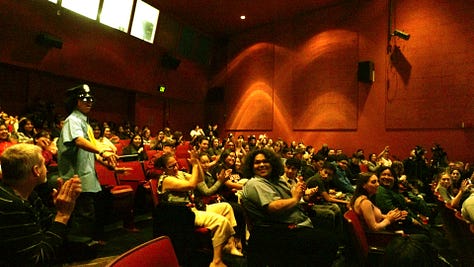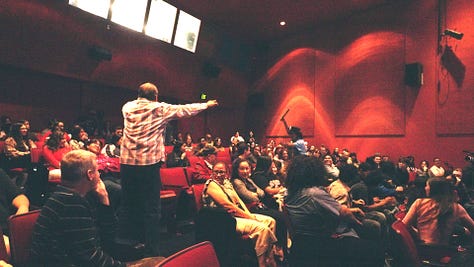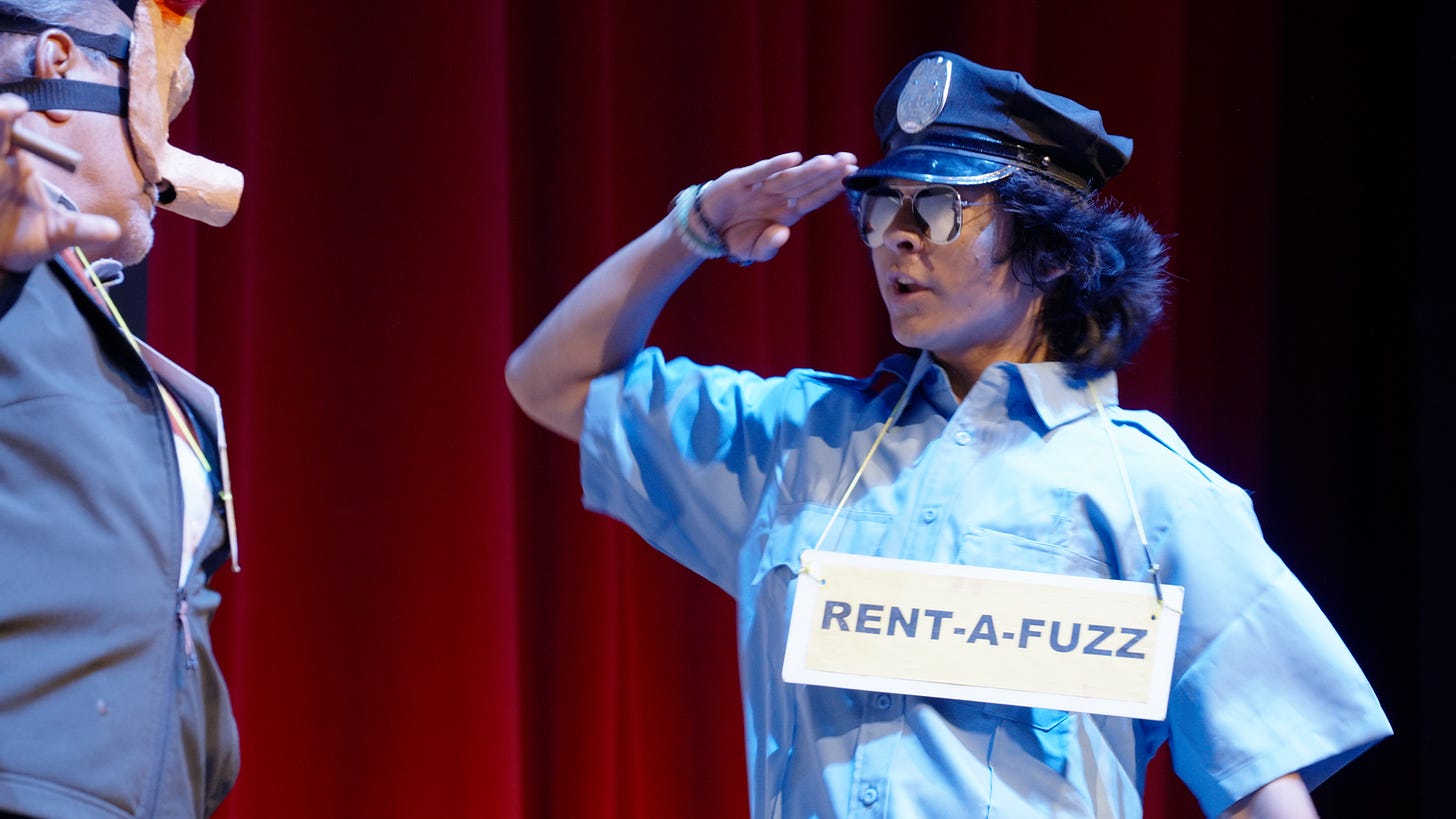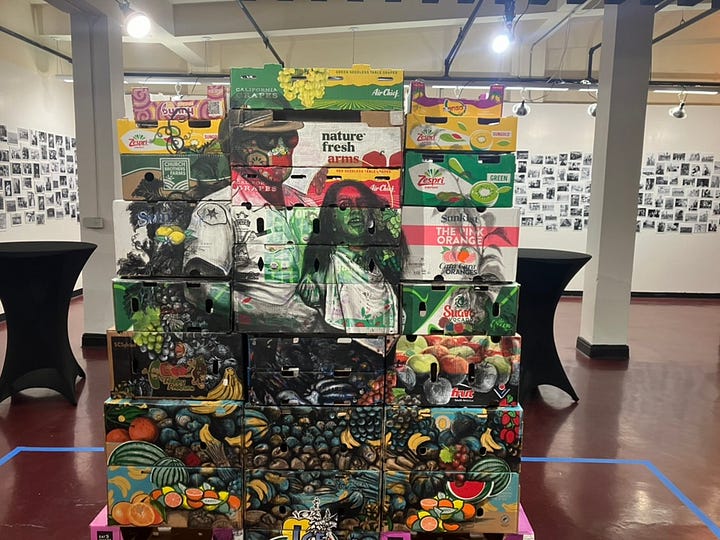Vera Jackson, Trailblazing Photographer
Teatro Campesino, Mike Emery, and artist Narsiso Martínez
We celebrate the acquisition of the historic photographic collection of Vera Jackson who worked in the 1940s as a photojournalist for The California Eagle under Charlotta Bass—the legendary editor and publisher of the most influential Black newspaper in Los Angeles at the time. We also celebrate the success of the two presentations and performances of El Teatro Campesino’s acto, “Las Dos Caras del Patroncito;” the digitization of the archives of CSUN's award-winning journalism professor, Michael Emery; and Narsiso Martínez’s artistic response to our exhibition Hope and Dignity.
The Vera Jackson Collection
By José Luis Benavides

Recently, we announced the acquisition of the collection of Los Angeles pioneering photographer Vera Jackson (1911–1999). We are deeply honored that her granddaughters Jessica and Toi trusted their grandmother’s work to us, and we are thankful to the former dean of CSUN’s University Library, Dr. Mark Stover, who made this acquisition possible.
Like Charles Williams, Harry Adams, and Jack Davis, Vera Jackson’s place among the forerunners of African American photography in Los Angeles is already secured. By 1983, when Lonnie G. Bunch III and Roland Charles curated “The Tradition Continues: California Black Photographers,” the first and most comprehensive survey of Black photography ever exhibited in Los Angeles, Jackson was featured as one of the seven pioneer Black photographers—the only woman.

The Bradley Center already houses the West Coast's largest collection of African American photography. We want more people to know about her life and trailblazing work as a photojournalist for The California Eagle in the 1940s, and her independent photographic work here in Los Angeles and abroad, particularly in Africa. Please join us in publicizing the significance of this collection and securing funding to process and digitize it soon.
Las Dos Caras del Patroncito






El Profe Dr. Jorge Huerta came on Nov 13 at CSUN to help provide the historical and theatrical context needed to enjoy two performances of El Teatro Campesino’s acto: “Las Dos Caras del Patroncito”, directed by Theatre Professor Doug Kaback. The cast included professional actor Rubén Garfias and three talented acting students, Daniel Martínez, Joshua Sandoval, and Juan Sánchez. Also, Professor Marta Valier’s journalism students curated a series of photographs displayed during the performance.

CSUN’s Little Theatre was packed for both performances with students from different disciplines who enjoyed the performance and learned about the significance of these actos—short plays meant to be performed by and for farmworkers. A team of students from IntersectLA video-recorded the presentation and performance we plan to use for our Farmworker Movement video playlist.

You can learn more about El Teatro Campesino on our Farmworker Movement website, our digital collection with thousands of images by photographers Emmon Clarke and John Kouns of the movement and El Teatro Campesino, and our video playlist. Next month we will feature students’ comments about this acto.

The Michael Emery Collection—CSUN's award-winning journalism professor
By Alohie Tadesse
Michael “Mike” Emery was an author, freelance journalist, and professor. He joined the CSUN journalism faculty in 1968 and taught at the university for over thirty years. Emery was deeply committed to the study and practice of journalism. Even as an academic, he still worked as a freelance journalist, traveling across the globe covering major stories. He is the author of The Press and America: an Interpretative History of the Mass Media and On the Front Lines: Following America’s Foreign Correspondents Across the Twentieth Century.

The Digital Services Lab recently digitized media from the Mike Emery Collection at CSUN’s Special Collections and Archives. The Lab digitizes and preserves film photography, 1/4-inch open reel tape, audiocassettes, minicassettes, DAT, VHS, U-Matic, Betacam, Hi8, and Mini DV tape formats.
Emery’s research and documentation for his stories and publications were donated to the Tom and Ethel Bradley Center and are now accessible through the university’s Special Collections and Archives.
Emery made several trips to Nicaragua and several other Central American countries to cover the height of the conflict between Nicaragua’s Sandinistas and the counterrevolutionary group, the Contras, supported by the U.S.

Emery took many photographs during these trips and recorded his interviews with the Sandinista leader, Daniel Ortega, and the Costa Rican president, Óscar Arias, on microcassette. He also extensively covered conflicts in the Middle East, traveling to Jordan, Israel, and Palestine - from 1987 to 1991.
On these trips, Emery recorded his thoughts, observations, experiences, and interviews with scholars, politicians, aid workers, local journalists, and Palestinian refugees on a portable cassette player.

Highlights from these archives include Emery’s audio diary recorded on audiocassette, color photo slides from Jerusalem and Gaza, interviews with journalists from the East Jerusalem newspaper Al-Fajr, and an interview with Jordanian leader, King Hussein.
Dr. Emery passed in his Woodland Hills home from prostate cancer in 1996. His contributions and commitment to unflinching honest journalistic coverage and writing are palpable in his archives and work. Read more about the collection here.
Then and Now: Hope and Dignity
Last month, artist Narsiso Martínez exhibited a piece he created as a response to our photo exhibition at the Museum of Social Justice. Narsiso’s piece has been removed but you can see the exhibition until January 25.






